Explore Oslo's blend of nature, culture, and innovation with these 16 delightful facts, each one offering a glimpse into the essence of Norway's thriving capital city.
Although I've lived in Trondheim for more than ten years now, Oslo was my home when I first moved to Norway. As such, I'm still a regular visitor to Norway's capital city, and there's always something new to learn.
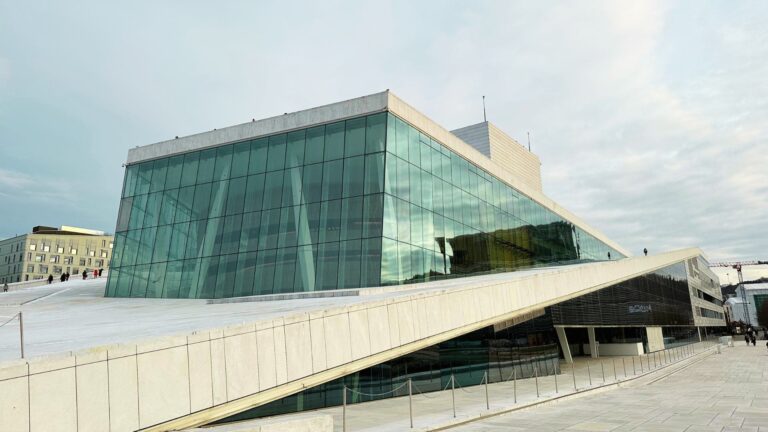
With a rapidly growing population, Oslo is a vibrant city that offers a mix of outdoor activities, world-class museums, and a dynamic food scene, all surrounded by natural beauty.
If you’re a fan of pub quizzes or you simply love all things Norwegian, grab a notebook and get ready to learn something new. We've gathered together these fascinating facts about Norway's capital city, Oslo.
1. Oslo residents are Norway’s healthiest
According to official government statistics, the city of Oslo has many people with good self-assessed health, good dental health, and healthy lifestyle habits.
19% of the population is overweight (BMI 27+), which compares favourably to the national average of 28%. The survey also found that Oslo locals drink less sugary soft drinks than average, and the numbers walking at least 30 minutes per day are also better than average.
2. Most of Oslo consists of forest
Oslo might be the capital but that doesn’t mean the Norwegian love of nature and the outdoors doesn’t apply here! Vast untouched forest surrounds the urban core and can be reached on public transport in under half-an-hour.
Known simply as Oslomarka (the Oslo forest), the forest is protected against most forms of development and is home to species such as lynx, wolf, beaver, moose and roe deer.
At the weekends, locals head to the trails for hiking trips during the summer and skiing trips during the winter. The most central and largest area is Nordmarka. For a taste of Nordmarka, take line 1 of the T-Bane to its end station at Frogneresteren and choose your trail!
3. The city used to be called Christiania
The renaming of Oslo to Christiania, and its subsequent journey back to its original name, covers a fascinating chapter in the city's history, reflecting both its resilience and evolving identity.
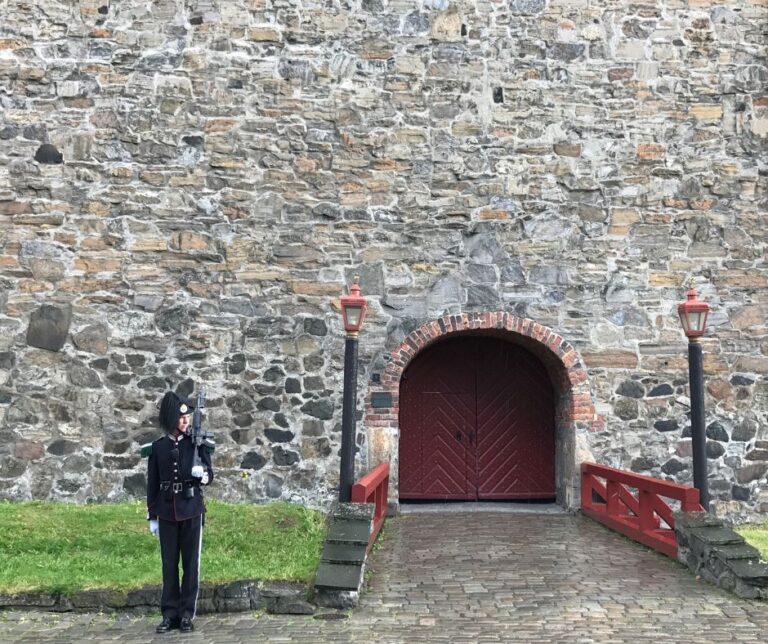
This tale begins tragically in 1624, when a devastating fire obliterated much of Oslo. In response, King Christian IV of Denmark and Norway, seizing the opportunity not just for urban regeneration but also for immortalizing his reign, decreed the city be reconstructed across the bay, in proximity to Akershus Castle.
This new urban centre was christened Christiania, in a direct nod to its royal benefactor, while the remnants of the old city were demoted to a suburb, retaining the name Oslo but gradually becoming known as Gamlebyen, or the Old Town.
Christiania flourished under its new guise, its growth fueled by strategic location and royal patronage. By 1850, it had eclipsed Bergen to become Norway's most populous city, a clear indication of its rising prominence and economic vitality.
However, the name Christiania itself underwent a transformation in 1877, subtly altering its spelling to Kristiania, though the reasons for this adjustment remain a mixture of linguistic preference and modernisation efforts.
The turn of the 20th century brought with it a wave of nationalism and a reevaluation of Norway's cultural identity, particularly as the country sought to distance itself from its historical union with Denmark.
The culmination of these debates and the shifting political landscape led to a significant decision: in 1925, nearly three centuries after King Christian IV's intervention, Oslo's original name was reinstated.
4. Oslo was the European Green Capital for 2019
Norway might be one of the world's biggest producers of oil and gas, but its capital city is in the middle of implementing a green revolution. City bosses plan to slash emissions by an ambitious 95 percent by 2030. This despite the fact that Oslo one of Europe's fastest growing cities.
During its year in the spotlight as the European Green Capital, Oslo acted as an ambassador for sustainable urban development, sharing and promoting what's worked with the hope of inspiring other cities to make similar changes.
5. The Nobel Peace Prize is awarded in Oslo
Oslo’s distinctive brown city hall plays host to the award ceremony of the Nobel Peace Prize every autumn. The recipient is selected by the Norwegian Nobel Committee, as per the wishes stated in Alfred Nobel’s will.
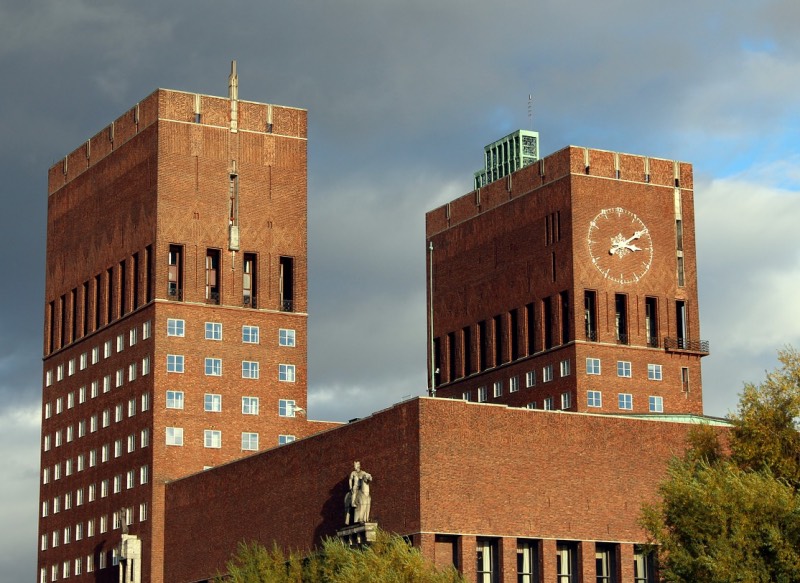
With some exceptions, the Prize has been awarded annually since 1903. It is given to those who have “done the most or the best work for fraternity between nations, for the abolition or reduction of standing armies and for the holding and promotion of peace congresses”.
Visitors can learn more about the Prize at the Nobel Peace Center located next to the City Hall. Many former winners are profiled and there is always a temporary exhibition on the current laureate(s).
In 2018, the Prize was awarded to Denis Mukwege and Nadia Murad, for their efforts to end the use of sexual violence as a weapon of war and armed conflict.
6. Trafalgar Square's Christmas tree is a gift from Oslo
Every year since 1947, Oslo has gifted the people of London a Christmas tree to say tusen takk for Britain’s support during World War II.
The tree, usually a 50-60-year-old Norwegian spruce, is selected well in advance from the dense forests that surround the city.
It is felled in November at a ceremony attended by the Lord Mayor of Westminster, the British ambassador to Norway and the Mayor of Oslo. When it arrives in Trafalgar Square, the tree is lit with white lights in traditional Scandinavian style.
7. Oslo hosted the Winter Olympics in 1952
From 14-25 February 1952 the eyes of the world fell on Oslo as the city played host to the planet's biggest winter sporting event. All of the events were held within the metropolitan area except for the alpine skiing, which took place at Norefjell.
694 athletes from 30 countries competed in four sports across a total of 22 events. Bislett Stadium was the centrepiece for the Games, while the non-alpine skiing events took place in the surrounding hills. Bandy – best described as field hockey on ice – featured as a demonstration sport.
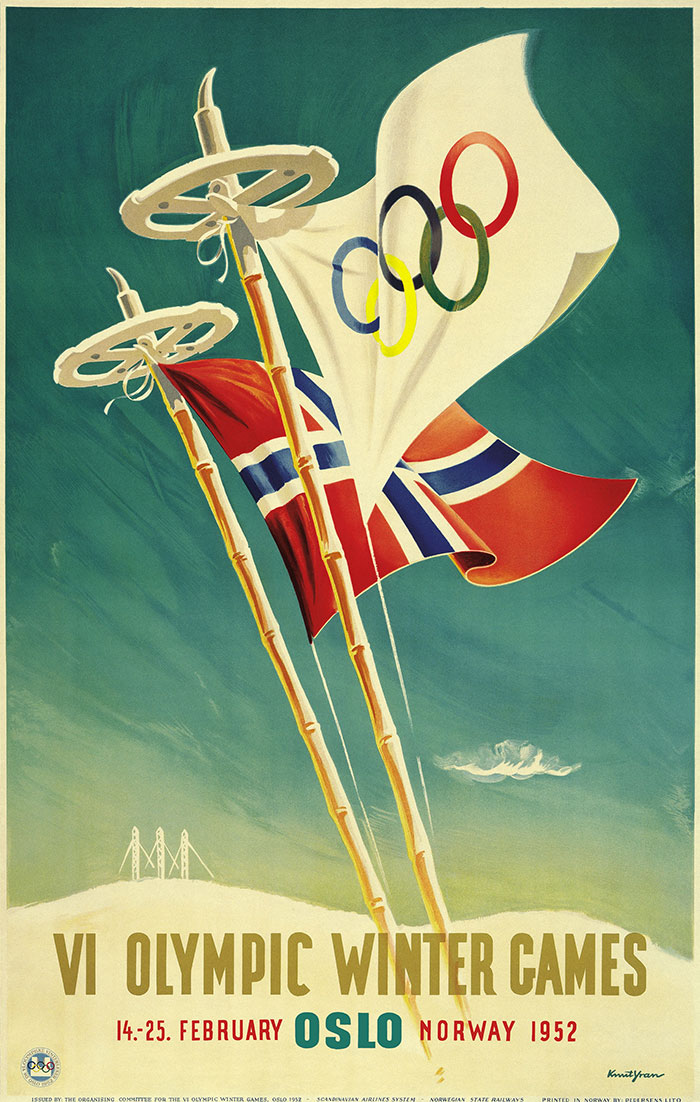
Norway topped the medal table with 16 medals, of which 7 were gold. The United States of America (11/4) and Finland (9/3) were the closest rivals).
The city had considered bidding again for the 2018 and 2022 editions of the Games. The national Olympic committee chose not to proceed with a joint Oslo-Lillehammer bid for 2018, while political support was withdrawn for the 2022 proposals.
8. Oslo is Norway's most ethnically diverse city
Oslo has a bigger percentage of immigrants and Norwegian-born children with immigrant parents than any other region in Norway.
According to official government figures, 25% were of the city’s population were born elsewhere and an additional 7.8% were born to immigrant parents. Most of the city’s population with an immigrant background come from Pakistan, followed by Poland, Sweden and Somalia.
Around half the population of the Groruddalen district is made up of immigrants and their children, while the figures are similarly high in many of the surrounding areas in eastern Oslo.
9. A city of islands
While the city centre and most residential areas are on the Norwegian mainland, Oslo counts many islands within its city limits.
Several of these can be visited by passenger ferry, which runs around once per hour during the busy summer season. Many locals own or rent small cottages on the islands and spend their July vacation there.
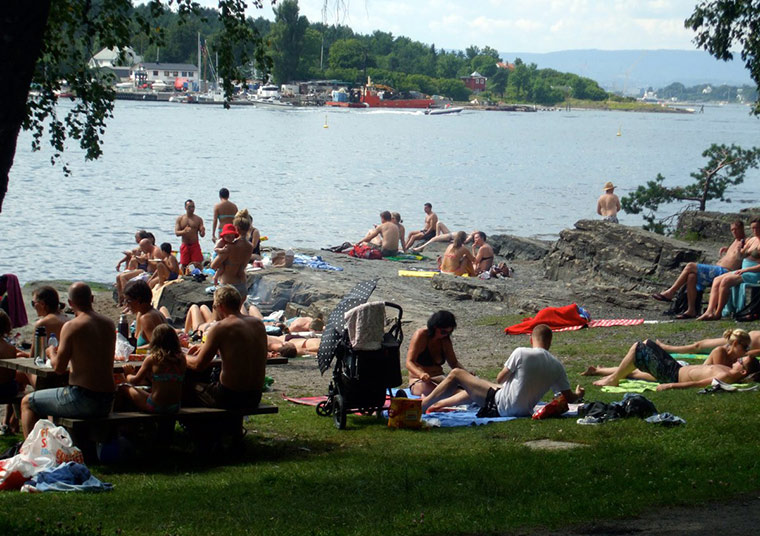
The islands also offer plenty to interest the tourist. Historical ruins, nature trails, and beaches are among the highlights, while a kiosk on Hovedøya serves up waffles, coffee and ice-cream to keep you sustained.
10. The city’s river has two spellings
The linguistic diversity of Norway, deeply rooted in its regional dialects, plays a significant role even within the confines of its capital, Oslo. This diversity is illustrated by the city’s river, known by two spellings: Akerselva and Akerselven.
The variation between Akerselva and Akerselven highlights a broader aspect of Norwegian dialectal variation, particularly in the way finite forms of nouns are spelled and pronounced.
Both terms translate to “The Aker River” in English, underscoring that the difference is not in meaning but in linguistic preference. This reflects a deeper characteristic of Norwegian society, where dialects are not merely a means of communication but are also a source of identity and pride.
This phenomenon extends beyond the river's name to other place names within Oslo, such as Majorstuen and Majorstua. In Oslo, this linguistic diversity is embraced as a reflection of the city’s dynamic and inclusive culture.
11. Its nickname is the Tiger City
Despite the fact that the nearest wild tigers are thousands of miles away, Oslo is known as Tigerstaden, or the Tiger City.
The most agreed-upon reason is that the Norwegian poet Bjørnstjerne Bjørnson described a fight between a horse and a tiger in his 1870 poem ‘Sidste Sang’.
The tiger represented the dangerous city and the horse the safe countryside. City bosses now say Oslo is not dangerous like a tiger, but ‘happening and exciting’.
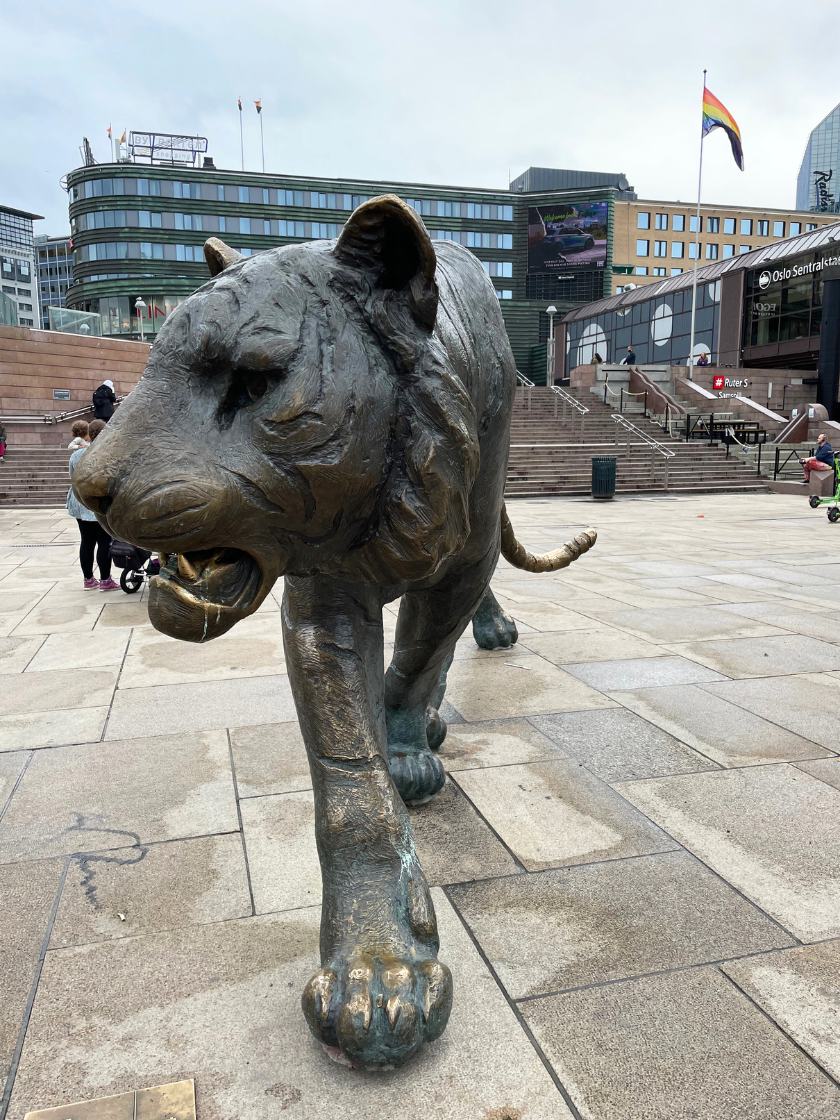
Every visitor surely knows the tiger statue on Jernbanetorget outside Oslo Central Station. The 4.5-metre bronze statue by Elena Engelsen was a millennium gift to the city from Eiendomsspar.
12. Oslo has more electric cars than any other city
Norway is well-known as an electric car capital. Thanks to a long-term policy of encouraging electric car use, Norway now leads the world in the switch to a greener form of driving.
So it's perhaps no surprise then that the capital city Oslo is the city in the world with the biggest percentage of electric car users. More than 50,000 registered all-electric vehicles are in use on the city's streets.
Many apartments have incorporated charging points into their parking garages, while public charging points are numerous.
13. Women do well in business
Gender equality is high on the agenda of many businesses based in Oslo. So much so, that 40% of the leadership positions are occupied by women, the highest percentage ever recorded in Norway.
Norway's parental leave rules encourage gender equality in the workplace. According to the latest figures, 71% of all fathers take full paternity leave.
Quick Oslo facts
We'll fiinish up this story with some quick Oslo facts. If you're interested in finding out more about life in Scandianvia, check out our article with top Norway facts.
14. The city is well-educated. Around 60% of Oslo's residents hold a university degree. Norway's universities and institutions are known for their high-quality research and innovation, attracting students and academics from around the globe.
Founded in 1811, the University of Oslo is Norway's oldest university and one of the highest ranked universities in the Nordic countries. In addition, there are several other higher education institutes in the capital.
15. Oslo recycles almost half its waste. Approximately 40% of materials from household waste are recycled or repurposed into new products, showcasing an efficient and sustainable circular economy.
This effort not only reduces the need for new raw materials but also lessens the overall environmental impact of the city's consumption.
16. Oslo reuses its waste heat. The remaining waste in Oslo is not merely discarded; it's transformed into a valuable resource.
This waste is converted into energy through advanced combustion processes, which are meticulously designed to be environmentally friendly.
This energy is then used to provide heating for numerous homes, schools, and businesses throughout the capital.
This innovative use of waste heat is a key component of Oslo's strategy to reduce its reliance on fossil fuels and decrease greenhouse gas emissions.
The city's district heating system, powered by waste-to-energy plants, is a prime example of how urban centers can adapt to meet energy needs sustainably.
That's all we have time for today. What other fascinating facts about Oslo do you know? If we expand this list in the future, what should we include?
If you've enjoyed this post, why not share it on Pinterest to help others find it too? We've got just the pin for that. Just hit those social sharing buttons.

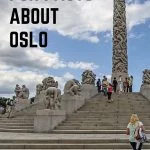

Hello, David! How have you been? Greetings from Rio de Janeiro. Brazil.
I am Sandra Sena. I work as a languages Instructor in some companies in Rio.
First and foremost, I would like to be grateful for your elaborated and rich articles on Norway. I try to read most of them.
Well, “Tigerstaden”? Wondrous, indeed! Tigers are brave and bold animals. Just try to see what the Chinese horoscope says on it! You might be surprised.
May you keep on writing articles in which we could delve into.
Regards! All the best!
Takk!
Sandra Sena
Hello David, Is there a way we can purchase that glorious retro Olympics poster? ~~
Judy in Denver
You could add that the Christmas tree displayed in Edinburgh each year is also a gift from Norway. It is gifted to the city by Hordaland County Council to mark the assistance provided by the Scots to Norway during WWII. It used to be an actual Norwegian tree but after an enormous outcry when a famous tree was cut down to provide it is now a Scottish tree.
Yes, but Hordaland isn’t Oslo. We mention the other trees in many of our Christmas articles.